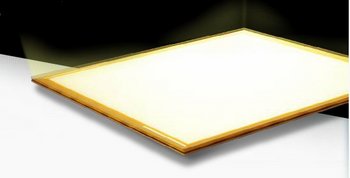Recently, LG Chem has completed the development of their first OLED lighting panel, and has planned to start mass production.
The new panel called the "type 1" panel, or the LG-OLED-041 is a 100x100 mm square panel that features 4,000K, CRI>80, 45 lm/W and 10,000 hours lifetime (LT70) at 3,000 nits. The active emitting panel is 90x90 mm, and the whole panel is 2.44 mm thick (including the optical film and PCB. The OLED itself is 1.84 mm).

Apart from that, the company is also developing the 2nd generation (or "type 2") panel which will up the efficiency to 60 lm/W and the lifetime to 15,000 hours. It will keep the same size, but the color will be 3,500K. It plans to start mass production of type 2 panels in 2Q 2012.
In the meanwhile, LG Chem published their OLED lighting roadmap. According to its roadmap, the company schedules to provide larger panels (150x150 mm) which will feature 80 lm/W and 20,000 lifetime hours (LT70) by 2013. And they will also produce transparent panels by then. By 2015 the company will offer flexible panels as well, and their most efficient panel will feature over 135 lm/W and 40,000 lifetime (LT70) at 200x200 mm.












